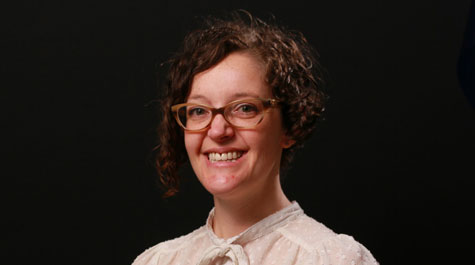Professor studies gentrification’s impact on religious communities
After writing about religion and sports, Annie Blazer found there was a thread she needed to explore further.
Blazer, associate professor of religious studies at William & Mary, is working on that now.
Her 2015 book Playing for God: Evangelical Women and the Unintended Consequences of Sports Ministry explored religious experiences of contemporary evangelical Christian athletes in the U.S. But Blazer felt that she had not delved deep enough into the issue of race relations.
So continuing to remain committed to immersing herself in communities for her fieldwork, as she did with her first book, she found a place to make her next steps — her own neighborhood of Richmond’s East End, which has been rapidly gentrifying in recent years. She spent her research leave last year starting the new project.
“My neighborhood is actually a microcosm for what’s going on in urban centers across this country and larger forces of systemic racism and economic growth that are impacting lives,” Blazer said. “So I found a couple of religious communities in the East End of Richmond to focus on as field sites. I spent a year embedding with them and trying to understand the way that they see neighborhood change.”
Next fall, she’ll be teaching on the topic in a class called Race, Religion and Rapid Gentrification at Richard Bland College, which is governed by W&M’s Board of Visitors, as part of the Promise Scholars program for students preparing to transfer to William & Mary.
“We’ll be doing field trips to the East End of Richmond, but also I’ll be asking them to teach me about Petersburg and what’s been going on in Petersburg,” Blazer said. “So I’m very excited to do that. And then after I’ve done that there, I’ll develop the course to teach at William & Mary also.”
For her research, Blazer followed groups such as the East End Fellowship, which formed approximately 10 years ago and has taken racial reconciliation as its religious mission. The group is young and approximately half black and half white, which Blazer said is rare, and its leadership is predominantly African American.
“It’s been really interesting to think about: How does this group, who emerges through gentrification, think about race and racial reconciliation?” Blazer said. “And one of the things I’ve been paying attention to is their use of media. They have a really interesting email communications strategy that emphasizes repetitive language and consistent formatting.
“They also do a songwriting internship every summer where they bring young people from across the country to write worship music that takes on the themes of racial reconciliation and social justice.”
She also followed a Church of God and Christ congregation that has been in the neighborhood for more than 40 years, moving several times. Currently, it meets in a former bank building that has fallen into disrepair, and the congregation is shrinking.
“It’s really been important to preserve their memories of what the neighborhood was like when it was more segregated and growing up in segregated Richmond,” Blazer said. “A lot of the people that go to that church still live in the neighborhood, which is really interesting compared to a giant black Baptist church in the neighborhood, which is thriving, but the people that go there mostly live outside the neighborhood and come in on Sunday and then leave.”
After working for a year, Blazer determined that she would need much more time for research. Unlike a sports team that she could follow for a season, church community life is more long-term and presents a different challenge for organizing research, she said.
Blazer plans to write a book but doesn’t think she’ll be ready to start writing for at least two more years to fully explore relationships that in some cases are 20, 30 or 40 years old.
“Mainly I’m interested in how people understand the changes in the neighborhood and how that impacts their relationship to the neighborhood and to their church,” she said.
Gentrification was accelerated by the housing crisis about 10 years ago, which saw foreclosed properties flipped and sold to more middle-class black and white residents who wanted to move to urban areas, according to Blazer.
She is also looking at previous shifts in population in Richmond’s East End. These include many white residents moving out in the latter decades of the 20th century. Almost all of Richmond’s public housing is in that neighborhood. Throughout the 1980s and 1990s, the area was known for high crime and poor schools.
“And then just in the past 10 years or so, you see an influx of mostly white, middle-class but also black, middle-class folks and mixed-race families that are doing a lot to try to get the city to put resources into the neighborhood differently,” Blazer said.
“So what you see is better streets, better sidewalks. The crime rate has gone down quite a bit. But you don’t see the same outcomes for public schools or public transportation. So there are uneven consequences from this change in population.”
Blazer’s interest comes from questioning her own role in the changes and society’s need for awareness of the larger picture.
“I think that we are often participating in systems of change without thinking about the consequences, myself included,” she said. “And so part of what I want to do in this book is investigate how people unintentionally participate in systems that disproportionately affect people that are already vulnerable in our communities.
“I think it’s useful as a form of self-reflection in that there are consequences to where you live and how you live. I’m really talking to people living in cities with this book, but I think it matters for reflecting on our local relationships in multiple contexts.”















